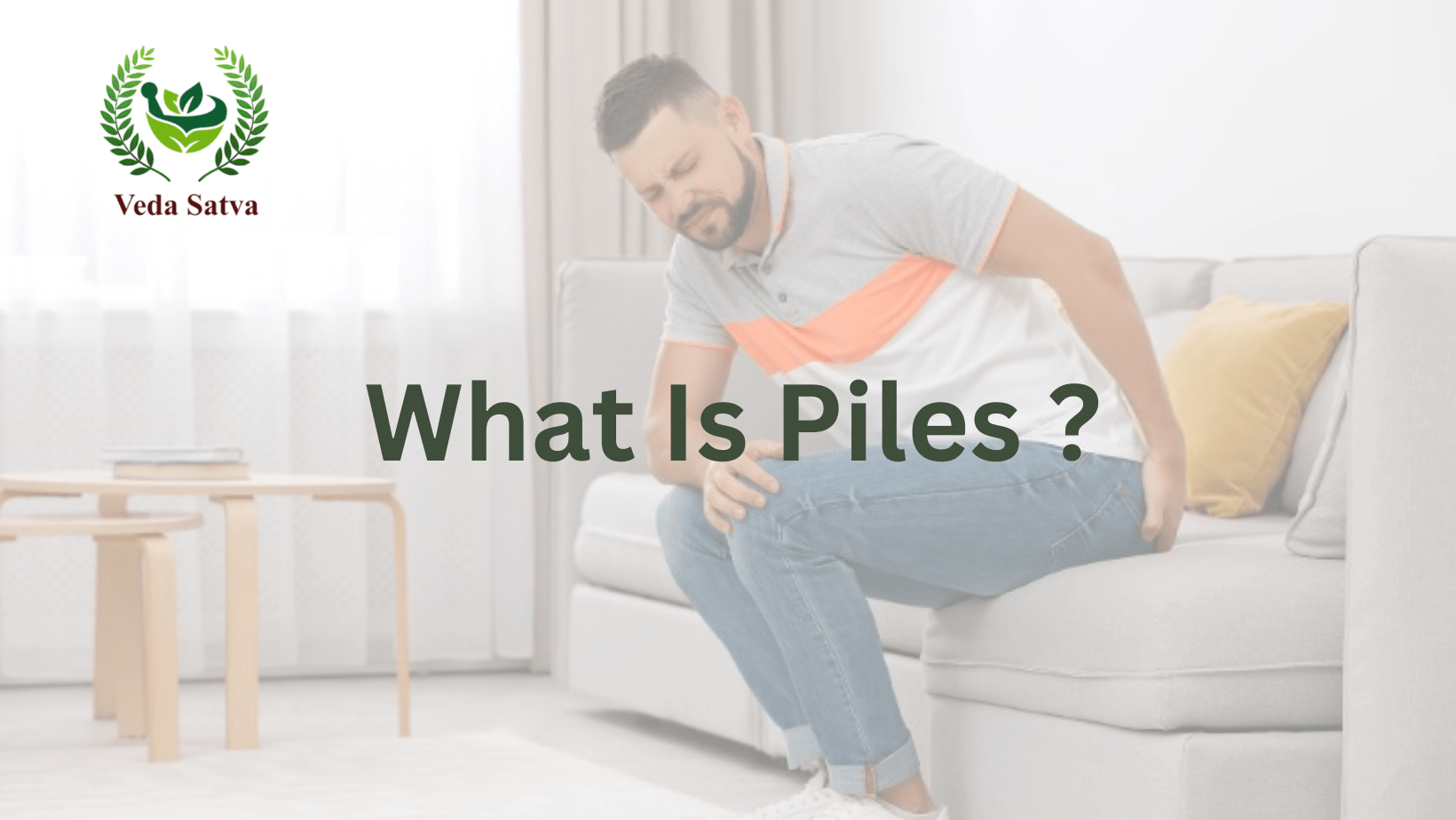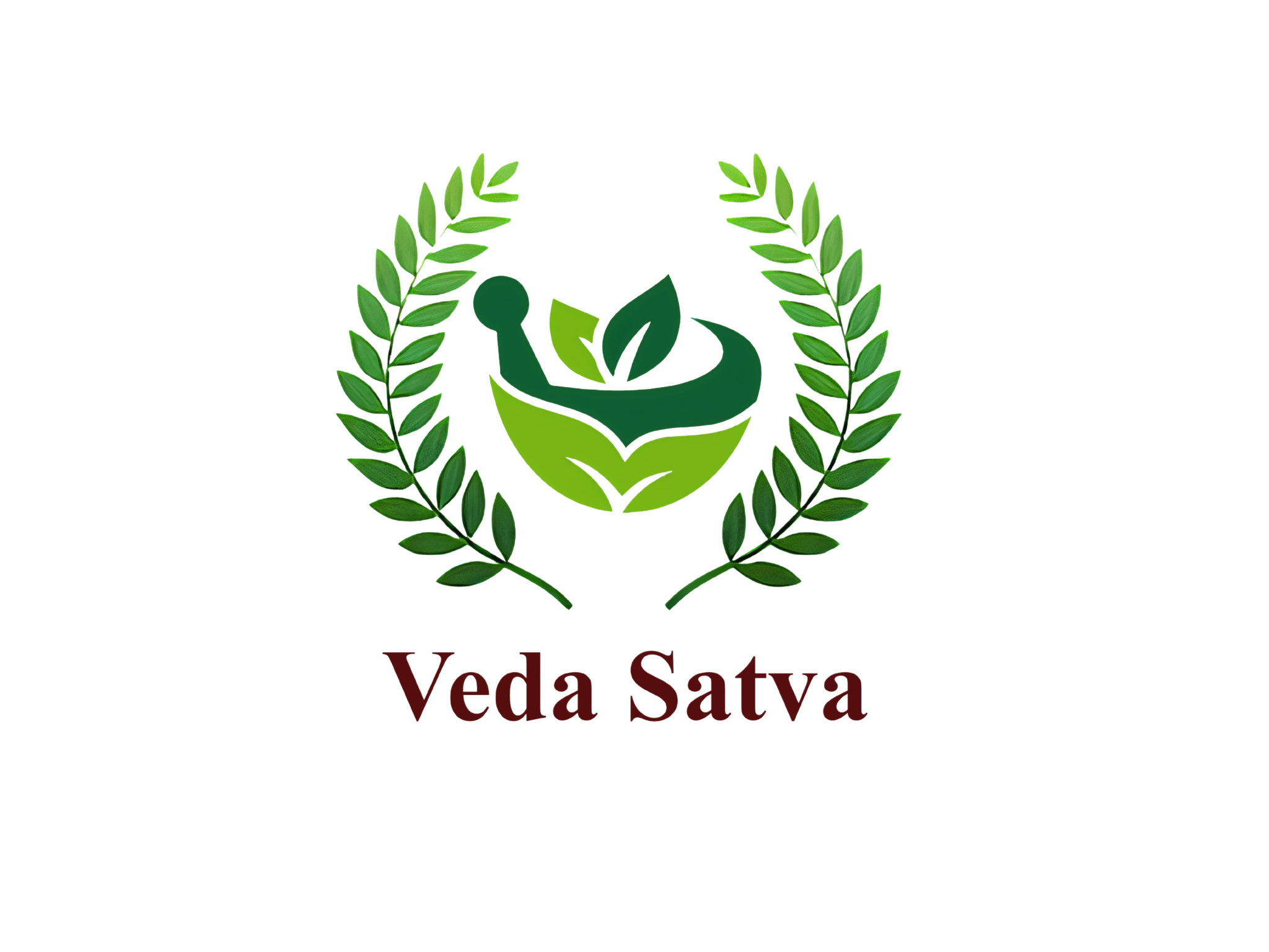What Is Piles – Causes And Risk Factors Of Piles
-
vedasatva@98727
- Posted on
- 0 comments

Piles Overview
Piles, also known as hemorrhoids, are swollen veins located around the anus and lower rectum. They can cause itching, pain and even bleeding.
Piles occur when too much pressure is placed on the veins in the pelvic and rectal areas. This extra pressure can be caused by straining during long periods of time on the toilet, chronic constipation or diarrhea, pregnancy, or an inactive lifestyle.
Piles are classified as either internal or external depending on their location. Internal piles occur inside the anus while external piles develop closer to the opening of the anus. External piles may feel like soft lumps that hang down from within; this type is often itchy and can become quite painful if aggravated repeatedly. Internal piles usually remain unnoticed unless they prolapse out of their normal position due to excessive straining during a bowel movement.
What Is Piles ?
Piles, also known as hemorrhoids, are a common issue that affects millions of people around the world. Piles occur when veins in the lower rectum and anus become swollen and inflamed. They can cause discomfort, pain, burning sensations and even bleeding during bowel movements.
There are two different types of piles: internal or external. Internal piles form inside the anus while external piles form outside of the anal opening. Symptoms of both types include itching in the affected area, swelling or lumps near the anus, a feeling of fullness after passing stool or leakage from the anus. In some cases it is possible to have both internal and external piles at once.
- Internal hemorrhoids (Piles)
Internal hemorrhoids, also known as internal piles, are swollen veins in the rectum and anus. They can occur internally within the rectum and anus or externally outside of the anal opening. Internal hemorrhoids are usually painless, but they can cause discomfort, itching, and bleeding during bowel movements.
When internal hemorrhoids become large enough they may protrude from the anus causing further discomfort. Internal hemorrhoid symptoms include bright red blood on toilet paper or stool after a bowel movement, feeling of incomplete emptying after having a bowel movement and a lump or bulge near the anal opening that is tender to touch.
If you notice any of these symptoms it is best to seek medical assistance right away as there are treatments available that can help with managing symptoms such as home remedies like sitz baths or over-the-counter medications to reduce swelling and provide relief from itching.
2.External hemorrhoids (Piles)
External hemorrhoids, also known as External Piles, are a common condition that affects the veins around the anus and lower rectum.
These swollen veins can cause itching, pain and sometimes bleeding. External hemorrhoids are more frequently seen than internal ones and may be caused by any number of factors such as straining during bowel movements or from sitting for extended periods of time. Although this condition is very uncomfortable it is fairly easy to treat with over-the-counter medications or natural remedies such as apple cider vinegar and witch hazel.
In some cases, however, external hemorrhoids may become thrombosed which means they form a blood clot inside them. This requires medical attention since this clot can increase the risk of infection or even lead to an abscess if left untreated.
Causes Of Piles
Hemorrhoids, otherwise known as piles, can be caused by a number of different conditions. Straining during bowel movements is one of the most common causes of hemorrhoids. This usually occurs when someone sits on the toilet for an extended period of time while trying to pass a stool. Other potential causes include chronic diarrhea or constipation, obesity, and pregnancy.
Obesity increases the pressure on veins in the lower rectum and anus which can weaken them and cause them to swell. During pregnancy, hormonal changes increase circulation in the pelvic area which increases pressure on veins found in this area as well.
Additionally, constipation can lead to straining during bowel movements due to hard stools that are difficult to pass. Finally, frequent bouts of diarrhea can also irritate hemorrhoidal tissue leading to inflammation and swelling. Need Piles Cure Herbal Powder ? Buy Now Veda Satva Ayurvedic Piles Cure Powder.
Excessive Straining While Emptying Bowels :
When it comes to the issue of excessive straining while emptying the bowels, most people know that they should avoid this by taking it slow and easy. Unfortunately, many people don’t heed this advice and continue to push themselves too hard in an attempt to get everything out. This can lead to piles, which are a common side effect of straining too hard during bowel movements.
Piles can be extremely frustrating and uncomfortable, and can take a lot of effort to get rid of. If you find that you’re struggling with them frequently, it may be worth considering trying some strategies for avoiding piles altogether. For example, make sure you’re drinking plenty of water throughout the day, eat a well-balanced diet, and avoid caffeine or other stimulants before going to bed.
Chronic Constipation
Chronic constipation can lead to frustration and straining too hard to empty your bowels. This is because the bowels become chronically irritated, leading to poor elimination. People with chronic constipation may also experience:
- Flatulence
- Bloating
- Constipation-related pain
- Impotence or difficulty having an erection due to constipation-related straining
If left untreated, chronic constipation can lead to other health problems, such as kidney problems and dehydration. If you are struggling with chronic constipation, talk to your doctor about possible treatments.
Obesity
Obesity is a growing problem in the United States and around the world. It’s not just about having a lot of weight, it’s about having an unhealthy weight that puts you at risk for serious health problems. There are many challenges associated with being obese, such as most obese people who suffer from constipation. In fact, constipation is one of the most common symptoms of obesity.
There are many other health problems associated with obesity, including high blood pressure, heart disease, stroke, type 2 diabetes, and some types of cancer. If you are obese and you want to prevent these health problems, you need to lose weight.
Being pregnant
Pregnancy can cause chronic constipation and complications in the pelvic area, making it difficult to pass stools without prolonged straining. This condition is known as obstipation, and it commonly affects women in their third trimester. Obstipation can lead to a number of complications, including a higher risk of preterm birth, gestational diabetes, and cesarean delivery. In some cases, obstipation can also lead to fecal incontinence, a condition in which the patient cannot control their bowel movements. If left untreated, obstipation can have serious consequences for both the mother and her baby.
Eating a low-fibre diet
A lack of fibre in the diet can lead to a number of problems, one of which is a reduction in the amount of stool that is passed. This can cause constipation, and can also lead to abnormalities in bowel movements. In addition, a low-fibre diet can also leave the intestinal lining dry and hard, which makes it difficult for food to pass through. This can lead to further problems, such as discomfort during bowel movements and an increased risk of developing bowel cancer.
Hemorrhoids Risk factors - Piles Risk factors
Hemorrhoids and piles are both common medical conditions that can be uncomfortable and even painful. These health issues occur when the veins in the anal area become inflamed or swollen. Understanding the risk factors of hemorrhoids and piles can help you take proactive steps to prevent them from occurring.
Age is one of the most significant risk factors for developing hemorrhoids or piles. As people age, they are more likely to experience these conditions due to changes in their bodies as well as weakened muscles around the rectal area. In addition, people who are pregnant have an increased risk of getting hemorrhoids because of the pressure on their pelvic region during pregnancy.
Other potential risk factors include a low-fiber diet, sitting for long periods of time, being overweight or obese, having chronic constipation or diarrhea, and not drinking enough fluids throughout the day.

